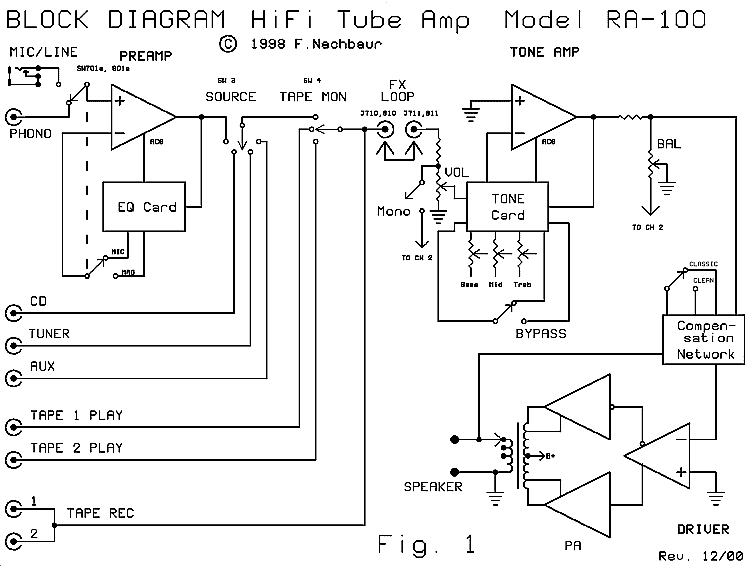

| 1-99 | Common parts (power supply, etc.) Also tube designations. |
| 100-199 | Left phono/mic preamp |
| 200-299 | Right phono/mic preamp |
| 300-399 | Left tone/line preamp |
| 400-499 | Right tone/line preamp |
| 500-599 | Left driver/PA |
| 600-699 | Right driver/PA |
| 700-899 | Power meters |
 |
 |
 |
BACK | INDEX | NEXT |